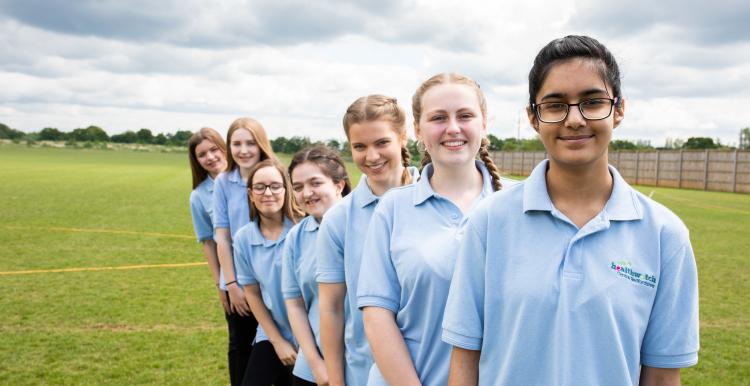How staff can improve children's health care experiences
We attended Trafford Primary Schools conference to speak to children about their health care experiences and find out what could be done to make things better.

Healthwatch Trafford attended the Trafford Primary Schools conference to speak to children about their experiences and views about health care services that they had used.
We wanted to know directly from them how they wanted to be treated to make their experiences better. We collected their opinions and experiences on how health workers could improve how they act and behave around them.
So we asked the question : What can health workers do to help even more to make you feel calm, happy and less worried??
The staff should be trustworthy
- The staff should be kind, calm and trustworthy. If staff are this could make children feel as though they can open up to them.
- Make it feel like home, listen to you carefully and be friendly. Such as a comfortable place to sit with an attractive surrounding (E.G) colourful and bright.
- Be friendly and make you feel happier. If staff are friendly this could make children feel confident and as though they can speak freely.
- Greet with a warm welcome, smile and a handshake, make eye contact with them when having a conversation to show that you are listening and understanding. This will help to get the child to open up to staff with what the problem is.
- Greet people nicely by talking to them when they enter the room. Take care of people and acknowledge they are there.
- Greet with a warm welcome by smiling and shaking their hand. Explain in an easy language so the child can understand.
- Greet with a warm welcome, smile and slowly approach the patient. Be able to explain in a child friendly way using simple language.
The staff need to be good listeners
- Be there to listen to you, have good knowledge and know how to get hold of someone.
- Sitting with them and listening to all their worries, be in a friendly room and have a cheerful personality, show full attention to show you have a good patient-doctor relationship. This will help to make the child feel safe talking to you.
- Sitting down with the patient, being smiley and chatty. Show full attention to all patients. Respect the patient.
- Sitting down with the patient and listening and answering any questions they may have. Show the patient that they have your full attention by showing eye contact. Try and be the same doctor they see on a regular basis, make conversation with the patient and have a sense of humour. By having the same doctor will put the child at ease as they have already developed a doctor – patient relationship.
- Sitting down and being chatty with them, giving them eye contact to show that you are listening to them when they are explaining.
- Speak softly and smile towards the patients. Ask them how they are feeling and give your full attention towards them when they are explaining. This will show the child that the doctor cares about what they have to say.
- Sitting down with the patient and listening and answering any questions they may have. Show the patient that they have your full attention by showing eye contact
They should be understanding
- They should be people who understand, have good education and listening skills. Without a good education they may not understand certain situations or questions.
- They need to be helpful, trust worthy and a good listener. If they are not a good listener the child’s needs won’t be taken on as well.
- Make it feel homely, the nurse should be friendly and sensitive to your needs.
- Treat people nicely and how they want to be treated, be friendly and take care of adults and children.
- Speak calm and softly, smile and be friendly. Try and explain the diagnosis to the patient in a simple way so they are able to understand fully. By not using technical language and so the child understands what is going on.
- Treat people in the right manner, be friendly and reward children if they become scared.
- Speak calm and softly, smile and be friendly. Try and explain the diagnosis to the patient in a simple way so they are able to understand fully.
- Treat people in the right manner, be friendly and reward children if they become scared.
- Explain in an easy context so the patient can understand
- They need to be nice and talk about what they are doing and what you should expect. Keep your mind off what will happen and make it feel like you are at home.
Talk about what they are going to do and what to expect
- They need to explain to the child in advance what will be happening before the actions are put into place. Make the environment inviting. Look at the child’s notes whilst they are not looking to reassure yourself of their diagnosis.
- Explain to the child what is going to happen and what actions they are going to take to make them better, keep the language simple. Make the rooms and staff more inviting.
- Explain to the child what is going to happen and what actions they are going to take to make them better. Make the environment friendly. Keep the terminologies simple.
- Be honest and explain fully what’s wrong. The environment should be colourful and have things to keep you entertained. Have more staff so you don’t have to wait so long.
- Tell the child what they are going to do, meet you before they are going to perform surgery. Make it feel homely and reassure them.
Make you feel safe and secure
- They need to make you safe, be good listeners and know what they are talking about.
- They shouldn’t scare you, they need to be trustworthy and make you feel safe.
- Be clear and reassuring towards the patient so they are not scared when you are explaining their diagnosis.
- Do not employ dodgy people. Make the room comforting. Approach patients slowly and calmly.
Have an inviting, child friendly environment
- Try and make the hospital more inviting, look at the book when the child is not looking and distract them with a teddy bear.
- The environment should be calm with water sounds/features. Have a fish tank, flowers and peaceful smells and talk softly.
- The environment should be colourful and have things to entertain you whilst you wait.
- Nice pictures on the walls to look at. Kind and friendly doctors. Let your family be with you before and after surgery.
- Explain their diagnosis in a simple term so they are more likely going to understand.
- Speak softly and calmly to children. Explain to them their diagnosis in a simple term so they are more likely to understand. Try and give them a distraction.
- Be friendly when greeting the children. Reward children with little things like stickers. Treat people in the right way.
Patients should keep visiting the same doctor instead of one they don’t know
- Meet you before you go in surgery to make you feel safe and aware of what’s going on. Make you feel like you are at home. You get to choose your doctor.
- Get to know you first. Understand your feelings about the situation.


